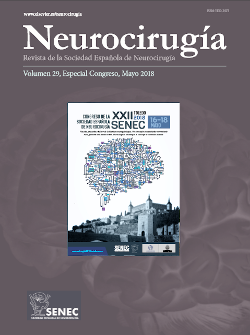C0458 - VESTIBULAR SCHWANNOMA: WHICH SURGICAL APPROACH?
1Neurosurgery Department, Verona University Hospital Verona, Italy. 2ENT Department, Verona University Hospital, Verona, Italy.
Objectives: Historically, in our Institution, vestibular schwannomas were operated through retro-sigmoid approach and semi-sitting position. Since September 2014, in collaboration with the ENT Department, we increased our surgical options: retro-sigmoid (with or without drilling of internal auditory canal), trans-labyrinthine and trans-canalar approaches. Endoscopic-assisted or endoscopic-guided surgery were both used.
Methods: From September 2014 to December 2017 we have treated 275 vestibular schwannomas: 181 through retro-sigmoid approach, 33 through trans-labyrinthine approach and 61 through trans-canalar approach (11, limited to IAC, with endoscopic-guided surgery; the others, with minimal cistern extension, through a widened approach). Neuroradiological characteristics guided the choice of the best surgical strategy. Intra-operative facial nerve neurophisiological monitoring was used.
Results: All tumours with serviceable hearing or diameter greater than 2.5 cm (regardless of IAC component) were treated through retro-sigmoid path. In the other cases if the schwannoma was limited to the IAC we preferred the trans-canalar approach; if the tumour presented total IAC occupation and cisternal extension, less than 2.5 cm, the trans-labyrinthine technique was used. Our primary outcome was total resection, which was achieved in all cases, regardless of the chosen approach. All three approaches allowed good exposition of the tumour mass and respect of nearby anatomical structures, including facial nerve preservation. Post-operatively we evaluated facial nerve functionality and hearing loss.
Conclusions: Given the right indication, the trans-labyrinthine and trans-canalar approaches offer a safe and useful alternative to the standard retro-sigmoid approach. Our study was limited because of the small number of cases and short follow-up. Despite these limitations we think that a more “tailored” surgery, choosing the surgical plan according to pre-operative neuroradiological findings and hearing function, could improve patient satisfaction.







